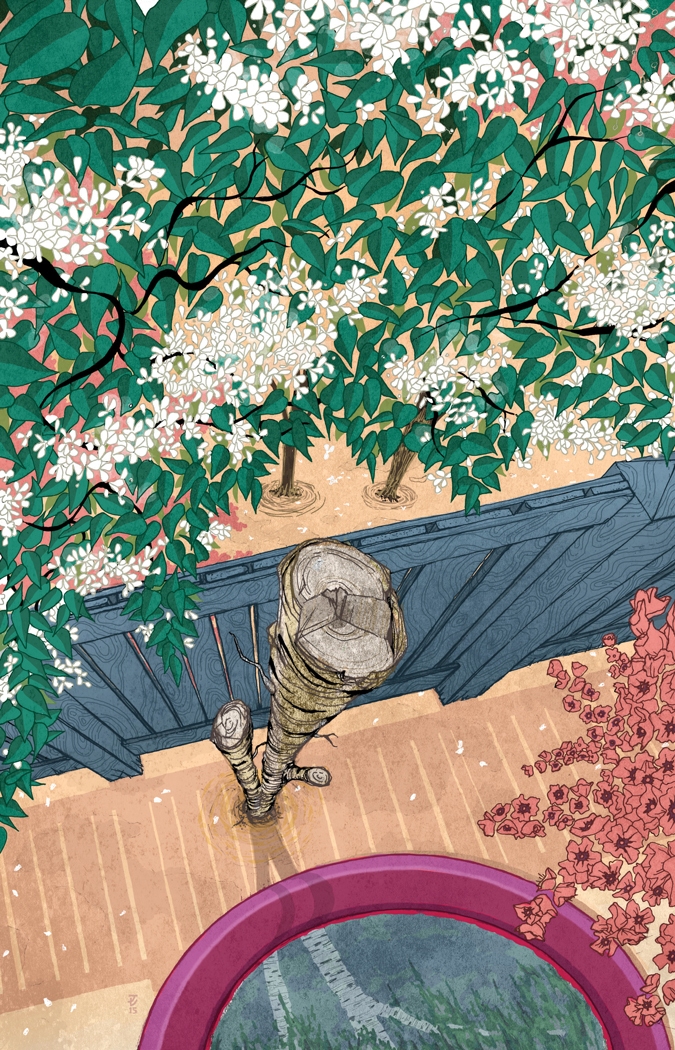My backyard birch tree is a victim of nature and misguided landscaping. Birches are beauties, usually. My favourite ones grace yards with a sashay of dangling branches, white bark glinting. Not mine. One trunk reaches 10 metres, while the other is lopped off at three. It’s not unusual. Next door is a clump of branchless trunks; up the block, every other branch on a 15-metre weeping birch is pruned to a stump. In its ugliness, mine is representative of its species in Edmonton.
Birch may be an outgoing breed here. The Canadian Forest Service reports that 25 per cent of Edmonton birches are dead; 65 per cent are, like mine, in irreversible “decline.” In 2008, it was 16 and 34 per cent. Bugs share the blame: bronze birch borers have destroyed woody tissue, leaf miners have defoliated. Persistent drought has weakened trees, making them easy feasts. Ace of Trees owner Doug Burton, trimmer of my birch, sees it as a gardener’s error. “Swamp trees,” he calls birches, “water pigs.” Our parched lawns are poor hosts.
Yet, I feel that leaving the dying where they stand says something appealing about Edmonton.
Damaged birches stand for a city of tree lovers. Our 300,000 trees are described in city plans as the “urban forest,” as if the phrase weren’t oxymoronic. We’ve set a goal of 16,000 new plantings annually. Roadside “Root for Trees” signs trumpet planting dates of nearby spruce and aspen like they’re formative moments in history. We don’t live just alongside our trees – we live among them.
Jeannette Wheeler, the city’s management supervisor of urban forestry, notes umpteen practical benefits of trees: Better air quality, stormwater management, temperature regulation, on and on. But, there’s also this: “If you ask people what they like about trees, they’ll say they’re pretty,” she says. They make the city “feel better.”
So, it’s hard to hear Burton say my birch should come out. “I don’t get it,” he says, even if my reluctance means the repeat business of annual trimming. “When it’s time to go, it’s time to go.” Rid the neighbourhood of a source of disease, he adds; start with a new tree.
